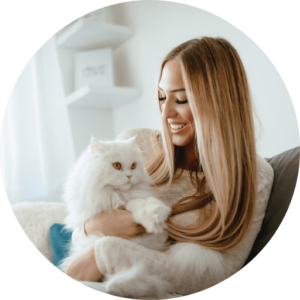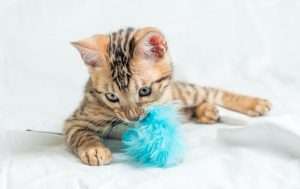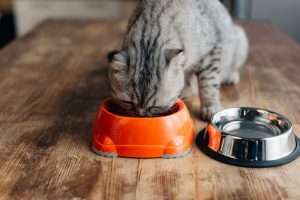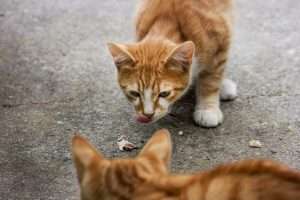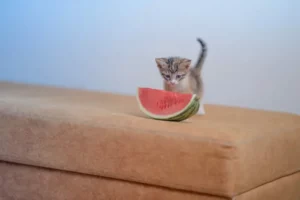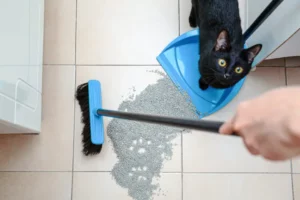Table of Contents
Can cats eat bananas?
Do cats like bananas?
Also, a lot of cats are scared of bananas. You’ve probably seen funny videos where a harmless banana scares a cat. Experts say these fruits smell like ethyl acetate, which most cats don’t like. You can stop your pet from scratching your furniture by rubbing banana peels on it. There’s also a chance that the shape of the banana makes it look like a snake, which might scare them.
How should you give bananas to your cat?
When talk about the banana, can cats eat banana peels? No, to give your cat a banana, first peel it and then cut off a small slice. Aside from their digestive system not being well-suited to a high-carbohydrate diet, your cat’s teeth are also not meant to chew such food. If you give your cat too large a chunk, he or she may swallow it and choke.
Consult your veterinarian if your cat exhibits signs of gastrointestinal distress, such as vomiting or diarrhea, or if the symptoms are more severe.

What are the advantages of cats eating bananas?
However, there are other foods that cats can consume that are more beneficial to their health than the good old banana. There is typically no need to include fruits in a feline’s diet because the food specifically designed for cats will normally meet all of the feline’s dietary requirements; hence it is unnecessary to do so.
To add insult to injury, cats don’t really care much for sweet meals like bananas most of the time. And if your cat is the odd one out and enjoys a taste every once in a while, keep in mind that bananas, with their high sugar content, can have a harmful effect on your pet’s health if they are given in excessive amounts and without moderation.
What are the disadvantages of cats eating bananas?
The first tip is to always consult with your veterinarian before introducing new foods to your cat. Based on your cat’s health, your vet knows every new food’s precise benefits and hazards.
Some meals can cause nausea, diarrhea, constipation, or other symptoms of gastrointestinal upset in cats. Make sure to keep an eye on your cat when it consumes any new meals made by a banana.
Cats with diabetes or obesity should avoid eating bananas due to their high sugar content. Overweight cats do not require the additional sugar present in fruits. For a while, it may be fine, but it can lead to diabetes or blood sugar surges. Diabetes symptoms include excessive thirst, weight loss, increased urination, loss of appetite, inability to jump, and vomiting.
Plant-based diets can cause discomfort in your cat because they lack the enzymes needed to digest or absorb them. So, after eating bananas, your cat may experience digestive troubles like vomiting, indigestion, or stomach pain.
Can kittens eat bananas?
Small treats, such as bananas, can be gradually introduced towards the conclusion of this period. Always with your veterinarian before introducing new foods to your cat.
If you’re not aware of what to feed a kitten, read the article on how to feed kittens for some advice.
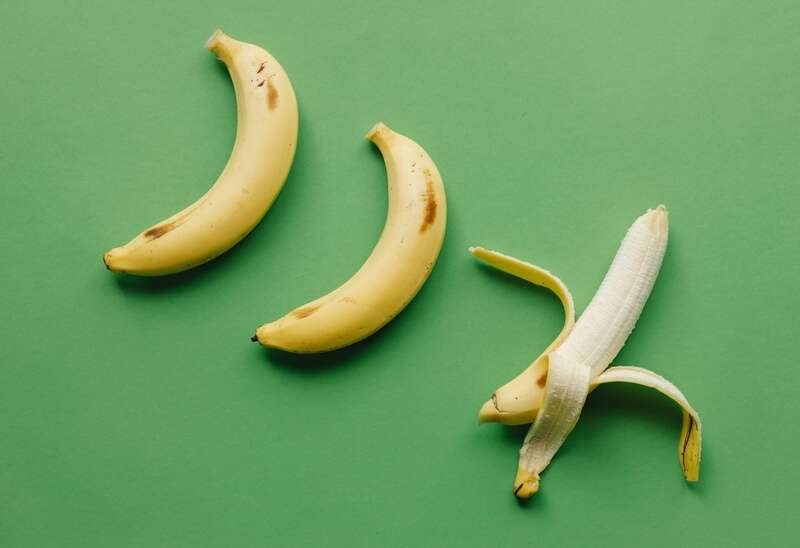
FAQs
The Verdict
On the other hand, your cat needs nutrients that ensure its health, and bananas are not particularly nutritious. A balanced diet designed by a Certified Feline Nutritionist is a superb option for your cat’s nutritional needs.
Follow the 90/10 rule of daily caloric intake while giving your cat treats. The majority (90 percent) of your cat’s calories in a day should come from their regular cat food diet, with healthy snacks making up the remaining 10%. Anything more in the snack category puts your cat in danger of becoming overweight or having diabetes.



